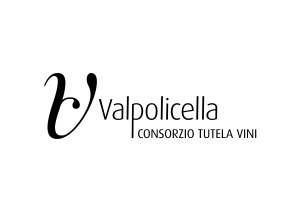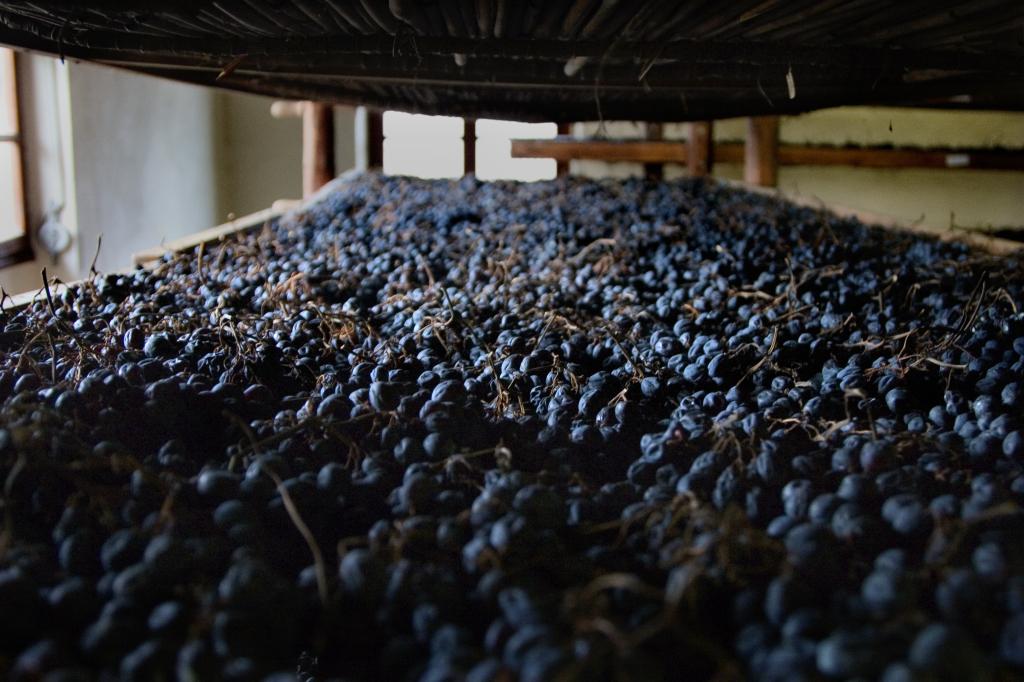 The origins of the name Valpolicella are still uncertain. There have been many interpretations throughout the centuries. The name ‘Val Polesela’ appears for the first time in an official document of the 12th century: it is a decree dated 24 August 1177 and carries the seal of a famous historical personality: Federico Barbarossa. Humanists looked for meaning in the Greek language: some translated the name “Policella” into “of many fruits”; others opted for the “very splendid” or “very blessed”. Any of these interpretations describe the characteristics of this area. More recent studies connect the origin of the name to the terminology ‘pollone’ (“pollus” in Latin), which describes fertile, sandy deposits, rich in seeds and vegetation. According to some reliable hypothesis the name Valpolicella originates from a contraction of the toponym “Valleys (vallis) – with many (polys) – cellars (cellae)”. Hence a territory where history and tradition are not meaningless words, as a matter of facts they are the true social structure of a reality nowadays evolving but still well-rooted in the people, in the places they have been living in and in the land they have been working for centuries.
The origins of the name Valpolicella are still uncertain. There have been many interpretations throughout the centuries. The name ‘Val Polesela’ appears for the first time in an official document of the 12th century: it is a decree dated 24 August 1177 and carries the seal of a famous historical personality: Federico Barbarossa. Humanists looked for meaning in the Greek language: some translated the name “Policella” into “of many fruits”; others opted for the “very splendid” or “very blessed”. Any of these interpretations describe the characteristics of this area. More recent studies connect the origin of the name to the terminology ‘pollone’ (“pollus” in Latin), which describes fertile, sandy deposits, rich in seeds and vegetation. According to some reliable hypothesis the name Valpolicella originates from a contraction of the toponym “Valleys (vallis) – with many (polys) – cellars (cellae)”. Hence a territory where history and tradition are not meaningless words, as a matter of facts they are the true social structure of a reality nowadays evolving but still well-rooted in the people, in the places they have been living in and in the land they have been working for centuries.
The production zones
Considering the Valpolicella as a wine-growing region we have to speak about a territory that covers practically the entire area at the foot of the hills in the Verona province.
The production area of the Valpolicella DOC covers the three valleys of Fumane, Marano e Negrar and the Valpantena, the Val Squaranto and the Illasi and Tramigna. To be precise, the Production Specification divides the Valpolicella into three distinct zones: the Classic Zone; the Valpantena Zone with the Squaranto and Mezzane Valleys; the East Verona Zone with the Illasi and Tramigna Valleys.
 “Reduce, Save, Respect”, three key words that summarize the efforts of the Consortium for the Tutelage of Valpolicella DOC Wines to increase the eco-sustainability of wine-production in the area in order to protect the intrinsic prestige association with the Valpolicella wines. The Consorzio’s project is both a precursor of the European directive and a step towards meeting growing consumer awareness of such issues.
“Reduce, Save, Respect”, three key words that summarize the efforts of the Consortium for the Tutelage of Valpolicella DOC Wines to increase the eco-sustainability of wine-production in the area in order to protect the intrinsic prestige association with the Valpolicella wines. The Consorzio’s project is both a precursor of the European directive and a step towards meeting growing consumer awareness of such issues.DOC Valpolicella wines
They are characterized by the use of local native varieties. The ampeloghrapic basis is mainly given by Corvina, Corvinone, Rondinella and other native varieties.
If Rondinella proves to be particularly important for the shades of colour it gives to the wine, Corvina and Corvinone, rich in polyphenols and tannins, express their best in the structure.
Valpolicella and Valpolicella Superiore
Valpolicella of the harvest year is therefore a fine youthful ruby-red wine with a winy, light perfume with hints of nougat, cherry and rose; the palate is fresh, dry and rather soft, pleasantly tannic, bitter and lively. “Superiore” is made from selected grapes grown in suitable locations and it ages for a year minimum thus obtaining its characteristic ruby-red colour with garnet shades; the nose is slightly ethereal and with hints of vanilla; the flavour is fine, harmonious, dry and velvety.
Valpolicella Ripasso
Valpolicella Ripasso DOC is obtained from the contact between basic Valpolicella and residual Amarone lees for about 15/20 days. It is characterized by a heavier structure and longevity. If compared to basic Valpolicella the alcohol content is higher, the acidity lower, the roundness more marked and the values of the phenolic substances and extracts are higher.
Ruby-red in colour with garnet shades, it offers a slightly ethereal perfume of red fruits with notes of vanilla. The palate is fine, harmonious, dry and velvety.
For its pleasant characteristics it perfectly pairs with winter first courses, main courses, cold cuts and medium-seasoned cheese. Wrongly considered a lower rank product compared to Amarone, Valpolicella Ripasso has recently been subject to an exponential increase in consumers’ liking. This is surely due to its high quality/price ratio, in part also due to market trends (linked to a name which currently is a registered trade mark) and to the fascination of a wine appreciated by the younger generations.
Valpolicella Ripasso has had a big success abroad as well and this has boosted the Veronese oenology.
It is obtained from dried grapes left in grape-drying buildings for 100/200 days. Its fermentation is stopped to preserve the sugar percentage necessary to grant the typical structure of this wine. The colour is intense dark ruby-red, at times impenetrable; distinct perfume of dried fruits and cherries in alcohol that continues in the harmonious and bold flavour with an austere tone and a good total acidity.
It perfectly pairs with desserts and blue cheese.
Amarone della Valpolicella
Obtained from grapes dried in fruttaio (grape-drying building) for 100/120 days where the sugar fermentation is completed, Amarone is one of the most enduring wines among the great Italian wines.
It has a very intense red colour with garnet shades and a perfume that reminds of dried fruits, tobacco and spices due to the noble rot which develops during the drying process. The flavour is very fruity and fragrant, dry but highly soft, with a full body, warm, invigorating and robust; it has a strong personality and can be stored for more than twenty years.
For its characteristics it pairs meat-based main courses, game, seasoned cheese but can also be enjoyed on its own, as a meditation wine.
 A new logo for the Consortium for the Tutelage of Valpolicella DOC Wines encapsulating the irreproducible link between the area, production of wine and uniqueness of the products. The logo will benefit from protection in 28 European countries starting from this year. The reference to the Valpolicella is essential as it portrays the ancient origins of the indigenous grape varieties used in the Valpolicella wines. The new logo also associates the concepts of grapes, work and wine linking them with a detailed image to reflect the meticulous work needed to make the wines of the Valpolicella.
A new logo for the Consortium for the Tutelage of Valpolicella DOC Wines encapsulating the irreproducible link between the area, production of wine and uniqueness of the products. The logo will benefit from protection in 28 European countries starting from this year. The reference to the Valpolicella is essential as it portrays the ancient origins of the indigenous grape varieties used in the Valpolicella wines. The new logo also associates the concepts of grapes, work and wine linking them with a detailed image to reflect the meticulous work needed to make the wines of the Valpolicella.

